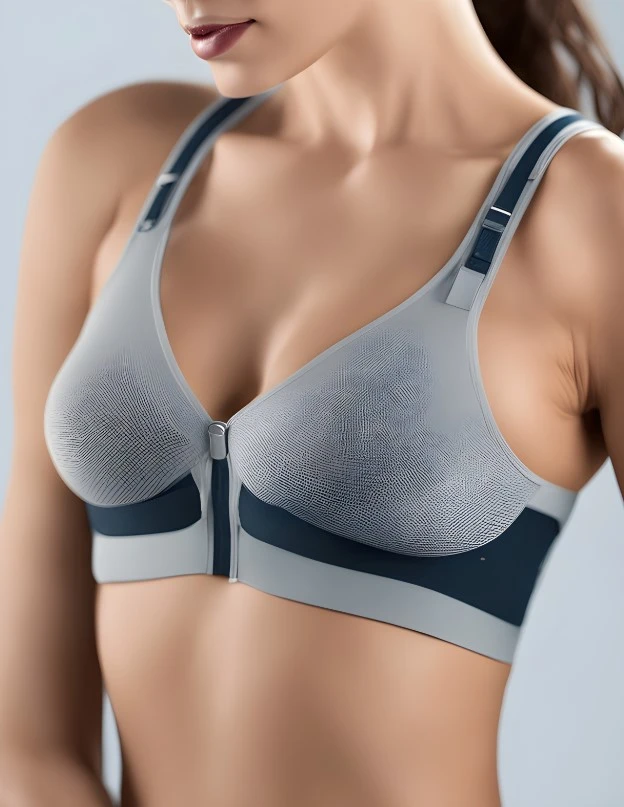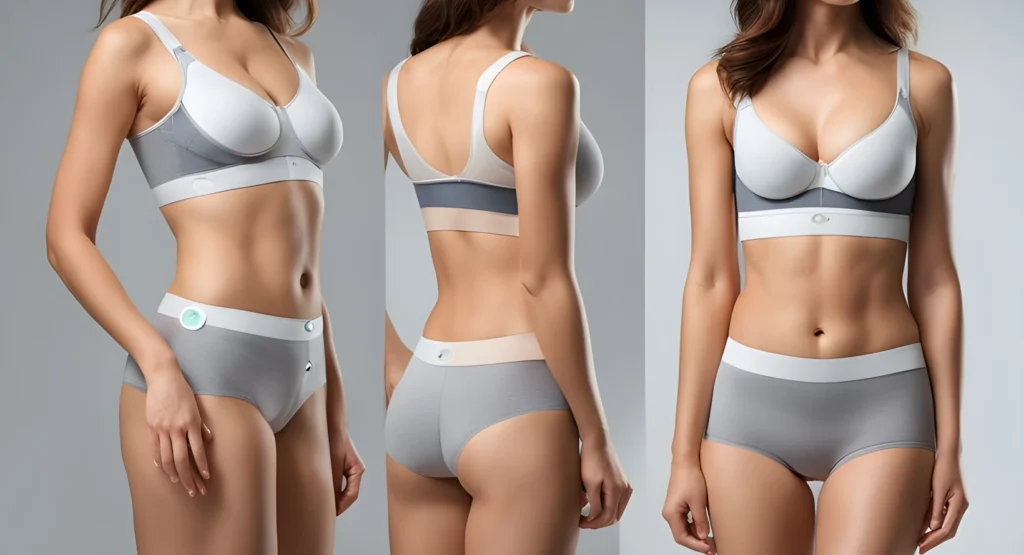
SMART INTIMATES
Smart Textiles: Transforming Comfort and Health in Intimate Apparel
The intersection of modern technology and fashion has sparked a new era of smart textiles, revolutionizing sectors across the clothing industry. Among these, the intimate apparel industry stands out with cutting-edge materials and innovative technologies that enhance comfort, health, and functionality for wearers. In this blog post, we’ll briefly talk about smart textiles and how they are transforming health and comfort in intimate apparel.

UNDERSTANDING SMART TEXTILES
Smart textiles, also known as intelligent fabrics or e-textiles, are materials that integrate digital components and electronic elements. The concept first emerged in Japan in 1989. A silk thread being one of the initial materials to demonstrate shape memory, earning its recognition as a smart fabric. These fabrics have the ability to detect, respond to, and adjust based on environmental changes or the wearer’s physical condition. They can adjust their mechanical features like color, shape, and stiffness, as well as their thermal or electromagnetic properties.
KEY FUNCTIONS OF SMART TEXTILES
- Sensors: Smart textiles incorporate sensors that convert signals, measuring vital signs like heart rate, breath rate, temperature, movement, and humidity. These sensors are woven into the fabric to monitor health accurately and comfortably.
- Data Processing: This component processes the data collected by sensors to produce desired outcomes. It ensures that the information gathered is effectively used for real-time feedback and adjustments.
- Actuators: These devices adjust the fit or provide support based on signals from sensors or processors, adapting to the wearer’s movements.
- Storage: While not essential, storage in smart textiles allows for information or energy storage, enabling functions like medication delivery or data recording.
- Communication: Smart textiles may include communication components to transmit data within the garment or to external devices. This functionality enables thorough monitoring and administration of health.

APPLICATIONS IN INTIMATE APPARELS
The intimate apparel industry has benefited greatly from smart textiles, turning traditional garments into high-tech products. Here are some key applications:
- Biosensor-Equipped Smart Underwear: Scientists at the University of California San Diego have created elastic bands with integrated biosensors for use in undergarments. These sensors detect enzymes like NADH and hydrogen peroxide, which are involved in various biomedical processes. They remain functional despite daily activities such as flexing and stretching, opening new possibilities for continuous health monitoring.
- Smart Bra: The smart bra is a prime example of smart textiles in intimate apparel. Developed by researchers at the University of Wollongong in Australia, this bra changes its properties in response to breast movement, providing better support during activities. It can be monitored via mobile applications and adjusts its tightness or cup rigidity to prevent discomfort and pain.
- Maternity Bra: Pregnancy brings significant breast changes, causing discomfort for many women. Smart maternity bras provide the necessary support and comfort by adapting to changes in breast size and shape, ensuring a better fit and reducing pain.
- Mastectomy Bras: These bras are designed specifically for women who have undergone a mastectomy. They feature an inner liner to hold prosthesis, helping to restore the appearance of natural breasts and improve the wearer’s confidence and comfort during recovery.
- Active Underwear: Designed with materials like PCM (phase change materials) polyester and elastane. These garments incorporate heart rate monitoring systems and offer thermoregulatory properties. They ensure high comfort levels by maintaining optimal body temperature and allowing good airflow.

Smart textiles in intimate apparel are modernizing the industry by offering improved comfort, health benefits, and functionality. These innovations meet consumer demands for stylish, technically advanced garments. Ongoing research and technological advancements promise even more sophisticated solutions, further enhancing overall well-being and user satisfaction.
